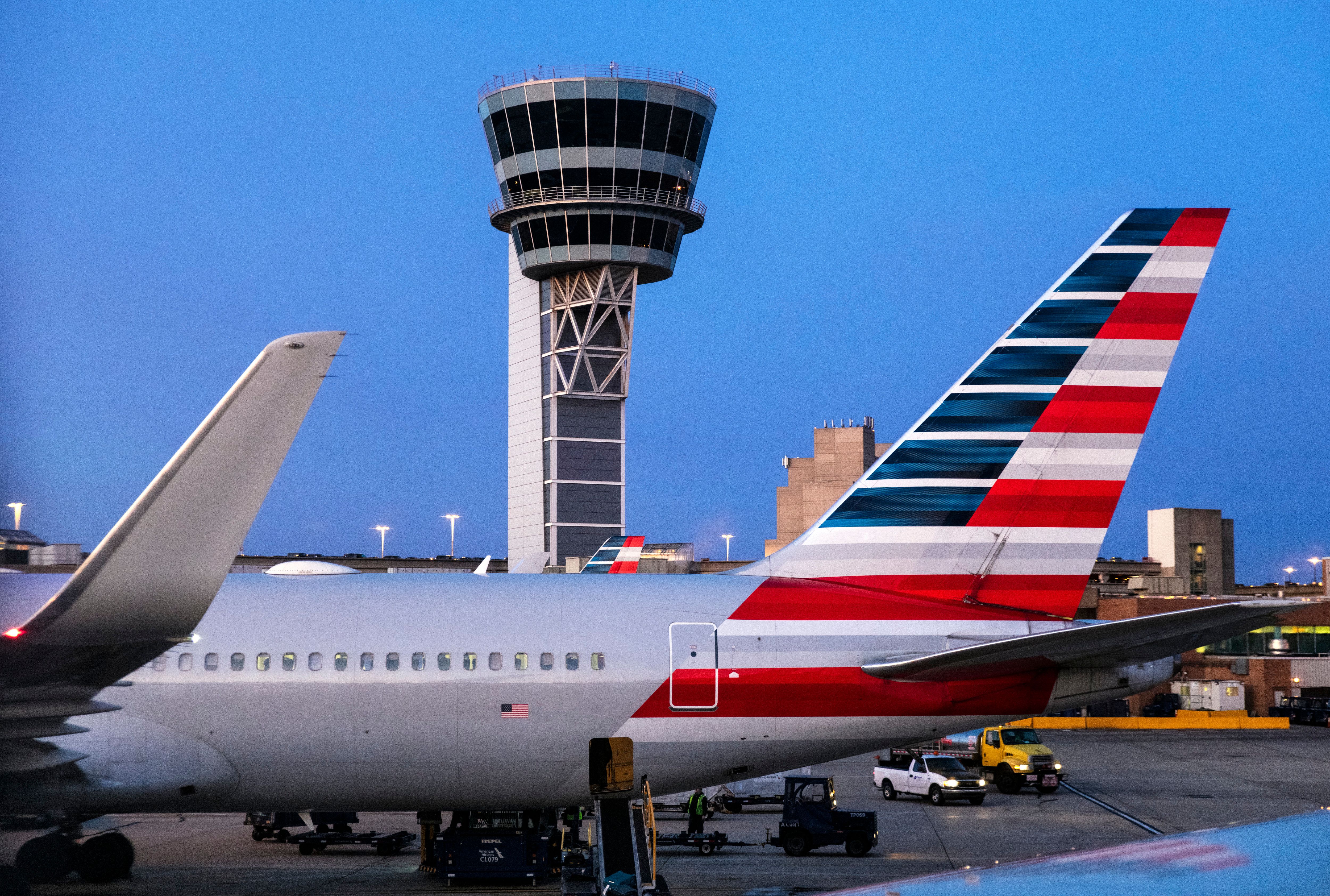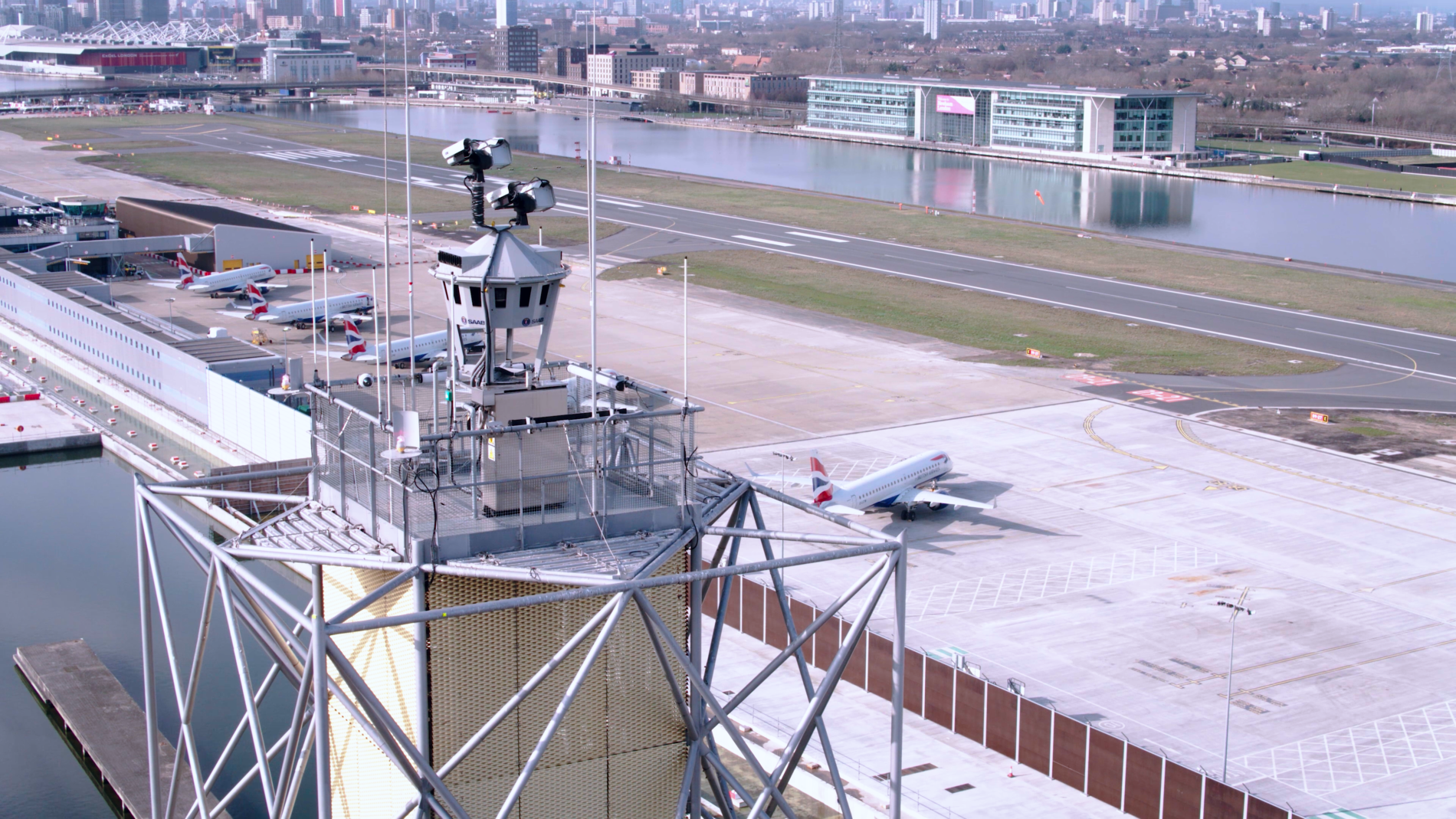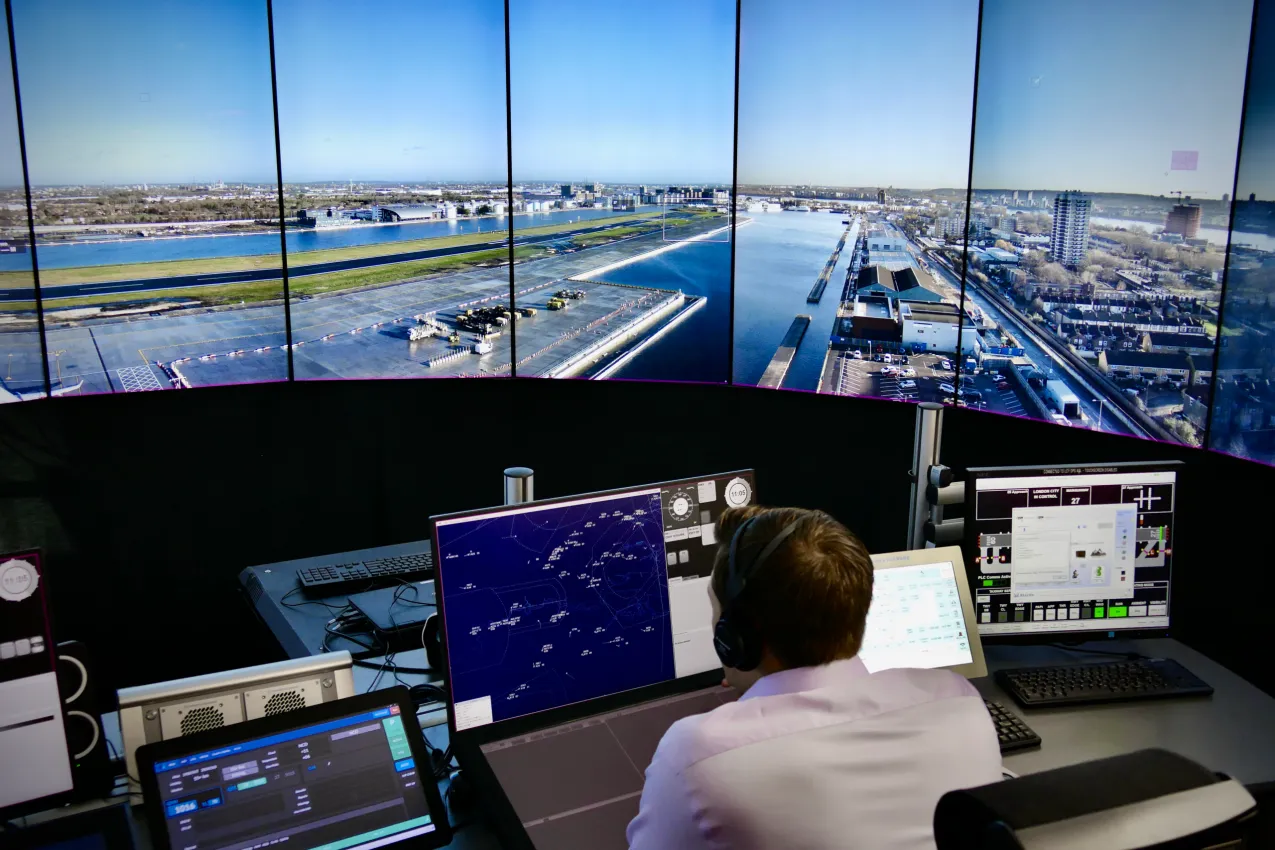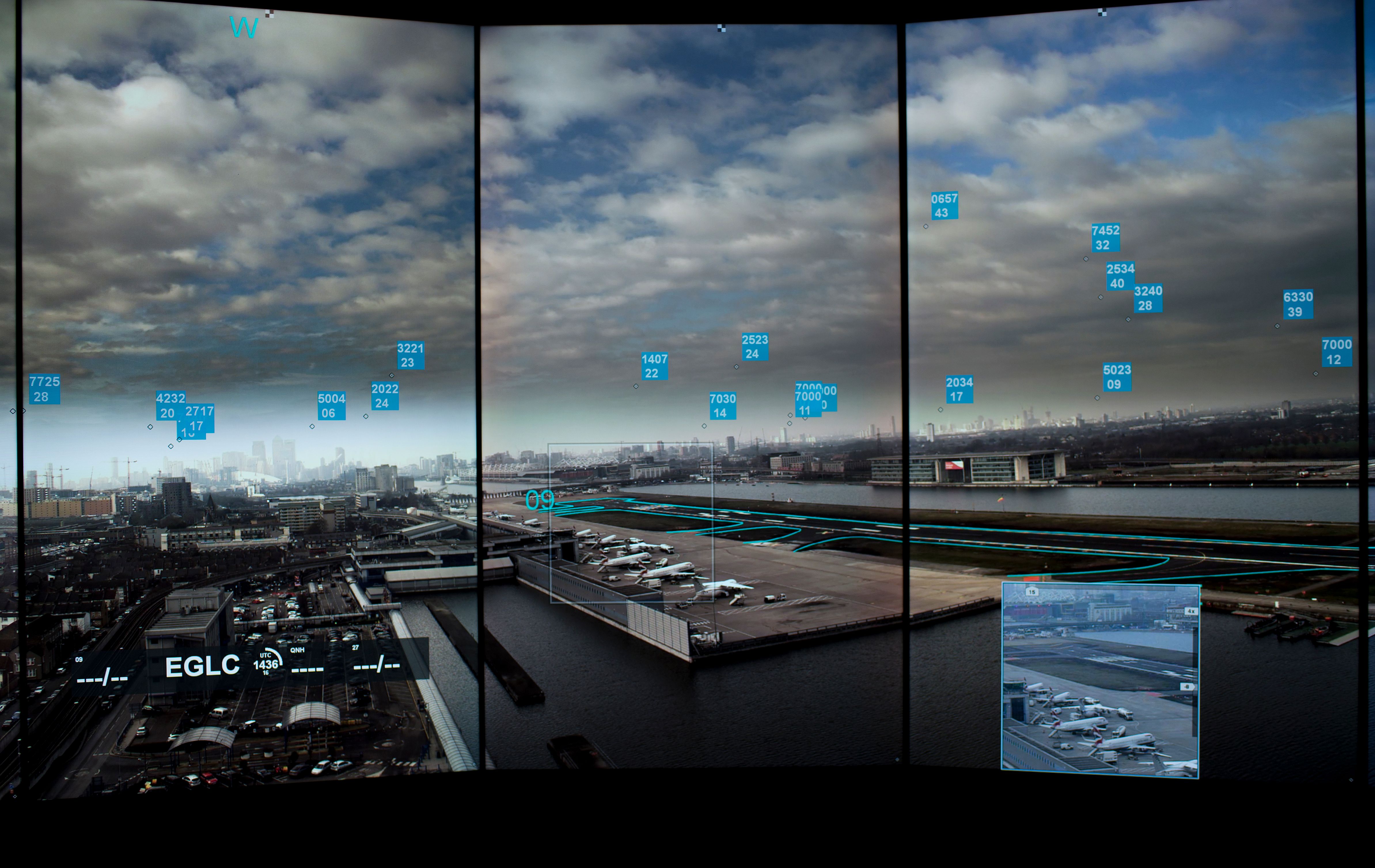Remote air traffic control towers are seen as a viable alternative to having people physically located at the airport overseeing apron operations. The technology is used at several airports across Sweden, providing an alternative to needing someone on-site at these infrequently used and often inaccessible airports.
In 2021, London City Airport became the first major international airport to fully be controlled by remote air traffic control towers. The new 50-meter-tall tower has no place for ATC operators to sit; instead, it houses a group of smart cameras.
How do remote towers work?
Remote air traffic control towers are located away from the airport and use a combination of high technology, including several high-definition cameras. This live feed is sent to controllers, often many miles away, and is displayed on an array of screens. This gives the air traffic control team at the tower an accurate live feed of the airport.
Remote air traffic control towers were first introduced to allow rural airports to be used more frequently, without the need to employ a full-time air traffic controller. Controllers working in other, busier airports can take care of the airplane movements at these small facilities thanks to this access to the same views and information that they would have in a traditional tower.
Air traffic control at London City Airport
The first major international airport to use remote air traffic control towers was London City Airport. When the new tower opened, Alison FitzGerald, COO at the airport, shared the following in a statement,
"We are immensely proud to become the first major international airport to adopt this pioneering technology. This investment in smart infrastructure will help us meet future growth in passenger demand, improve air traffic management and give us enhanced capability as aviation bounces back from the pandemic."
The digital tower provides a live feed for the ground controller, the air controller, and the coordinator. The controllers utilize pictures generated by 16 high-definition cameras to remotely handle air traffic. 14 HD screens form a panoramic moving image that provides a view of the whole airport.
Air traffic controllers at NATS' air traffic control station in Swanwick, Hampshire, monitor the feed, providing the same facilities that an on-site ATC would deliver. Constructing the tower cost around £20 million ($25 million) and, to date, has been incredibly effective in managing the air traffic at this busy London hub.
Stay informed: Sign up for our daily and weekly aviation news digests.
Benefits of remote air traffic control towers
There are many benefits to airports using remote air traffic control towers as opposed to a traditional tower, including:
- Using the high-definition pan-tilt-zoom cameras to get a very precise magnification of up to 30 times allowing in-depth focus on an object for close inspection.
- Due to the remote air traffic control towers being able to manage multiple airports this can deliver significant savings for smaller airports.
- Due to the images being on 14 high-definition screens, the live feed can be overlaid with information to help the air traffic control team, such as in-depth weather information, altitude and speed of aircraft coming in and leaving the airport, and their call signs.
The digital technology increases the situational awareness of controllers, allowing them to make rapid and informed decisions that improve safety and operating efficiency.
The first airport to use remote air traffic control
In 2019, the first airport to be built without a traditional control tower was the Scandinavian Mountains Airport in Dalarna, Sweden. It was the world’s first airport to be controlled remotely. The air traffic control for this airport is done in Sundsvall, which is 350km to the east of the airport. This tower uses 17 wide-angled cameras to survey this airport.
While remote air traffic control towers are relatively niche at the moment, this type of technology could well be much more widely used in the future.




